
Windhoek, the capital of Namibia. Lots of German influence makes this city look quite modern |
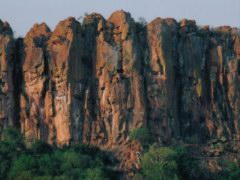
Waterburg National Park features 'Organ Pipes', just like in Tasmania |
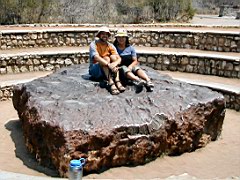
The Hoba Meterorite is the world's largest and is over 80,000 years old. I hid a cache here. |

Off to Etosha National Park. This is one of the many watering holes that you can visit to view wildlife |

Lots of Zebras |

|

More elephants! |

Our Safari truck with Karibu Safari |
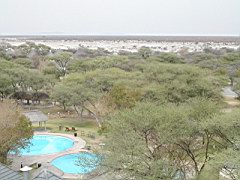
At the Okaukuejo campground in Etosha there is a tower you can climb for a better view |

Springbok are very common |
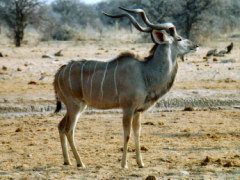
A Kudu |
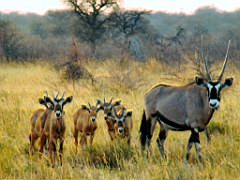
Adult Oryx and babies |

Etosha has both natural and artificial watering holes. This is a natural one |
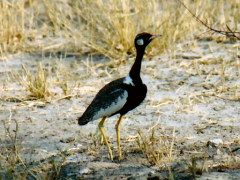
A Kori Bustard |

A Flying Banana |

Lion hiding under a tree in the hot sun. Taken with a 400mm lens |
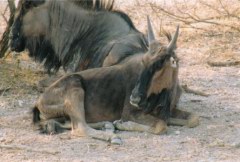
Wildebeest at rest (or is that a hartebeest?) |

Zebras at an artificial watering hole. Note the hyena on the right |

Hyenas are very strange looking predators |

Hyenas are gone and the zebras are more relaxed when they drink |
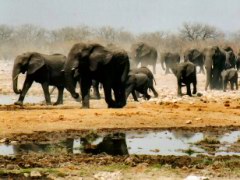
It's mid afternoon and the Elephants are coming to the watering hole to drink, cool down, and socialize |
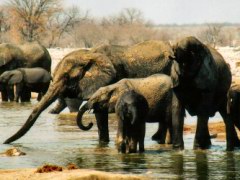
All other animals leave the watering hole when the elephants arrive |
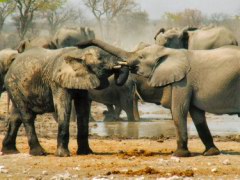
Hello, I think I met you at this watering hole a while back |
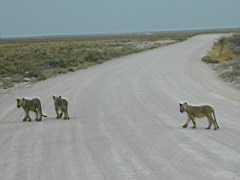
Lion cubs crossing the road at sunset |

Some parts of Etosha are flat pans with very little vegetation |
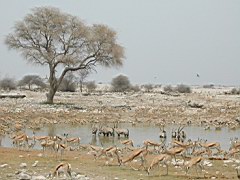
This is a very famous watering hole in Etosha that always has something exciting going on. I also hid a cache here. |

Night shots using ISO 800 film to capture a rhino at the same watering hole |
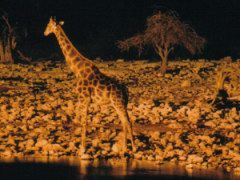
A giraffe waits until it is safe to drink |
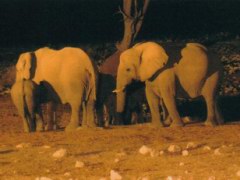
And more elephants |
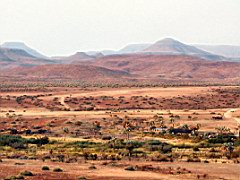
Off to Palmwag in north-west Namibia |

The landscape here is much different and it is quite dry |

I love this lemon-green colour of the grass in Namibia |
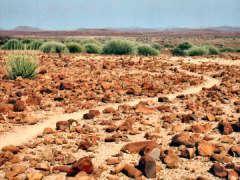
A bushwalk through an area with iron rocks |
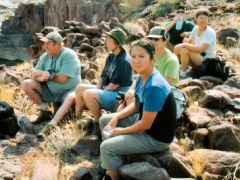
Resting after a long walk |

We came across a fresh Oryx kill, but all that was left was a couple of horns plus some hair and blood |
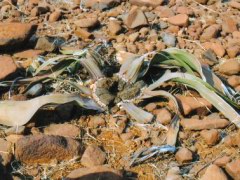
A Welwitchia, a tree that is 1500 years old with only two leaves |

Off to Damaraland, where the landscape changes again |

Cool round rocks |
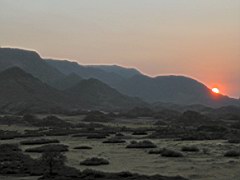
Sunset over Damaraland |

At Twyfelfontein you can visit historical rock art. I was busy hiding caches here as well. |
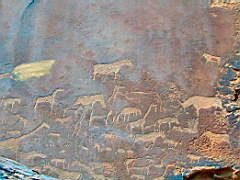
More rock art |
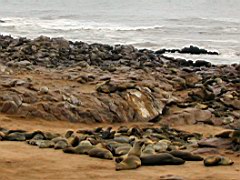
Cape Cross on the coast is a famous seal colony |

And boy does it ever smell bad! |
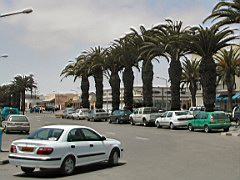
Swakopmund on the coast is quite a pretty town that has some German influence |

Sunset over the Atlantic Ocean. We saw a green flash here |
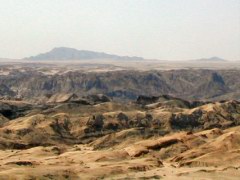
The Desert Moon Valley -- quite neat! |
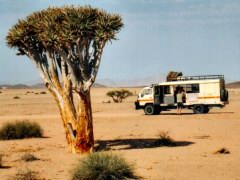
More strange desert plants |

Remote bush camp with no facilities |

Solitaire, a remote place to stop for some of Moose's delicious apple crumble? |
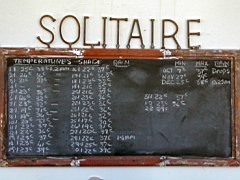
Not much rain and quite high temperatures |
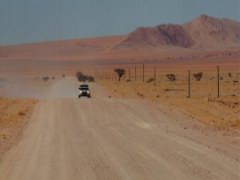
Most of Namibia is dry dusty roads cut into the desert |

The world's highest sand dunes are located in Namibia at Sossusvlei, we started out by climbing this baby dune which only an hour to get to the top! |
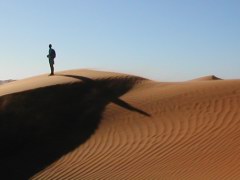
Lots of neat shapes and they are always changing. The average dune moves about 2cm a year |

|

|
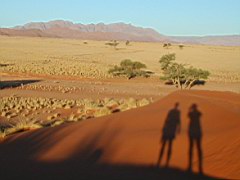
|

The next morning it was off to the big dunes. A two hour walk was required to reach the dunes from the car park, a mere 2km away. The morning light gave wonderful contrast to the dunes |

|
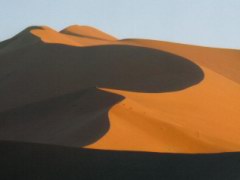
Just to give an idea of scale here, there are people climbing up this dune on the sunny side. Of course in this web-reduced image they are only a couple of pixels high |

|

|

|
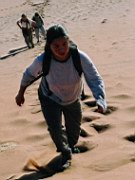
Up to the ridge of the dune is no easy task. This makes an excellent aerobic and strength workout! |
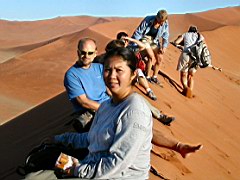
Top of the dune ridge |

Well you have to get down off the dune, which involves running down the 45° side. Top to bottom in this picture is 90m and only took a few seconds |

Neat patterns in the sand |
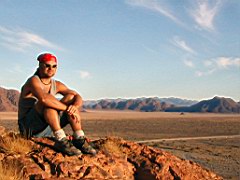
After the dunes we went for a hike up a small hill and watched the sunset |
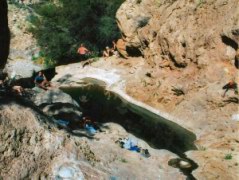
Our last night of camping included a hike to a small natural pool |
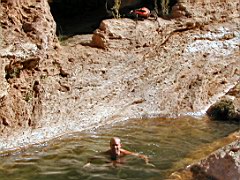
It was very hot, so had to go for a swim with the giant tadpoles in the water |
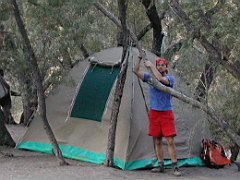
Yeeahh, last night in a tent! 4.5 weeks is too long to go camping |
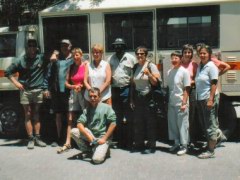
The group from the second tour back in Windhoek |
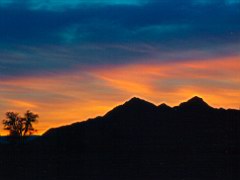
The final sunset |

